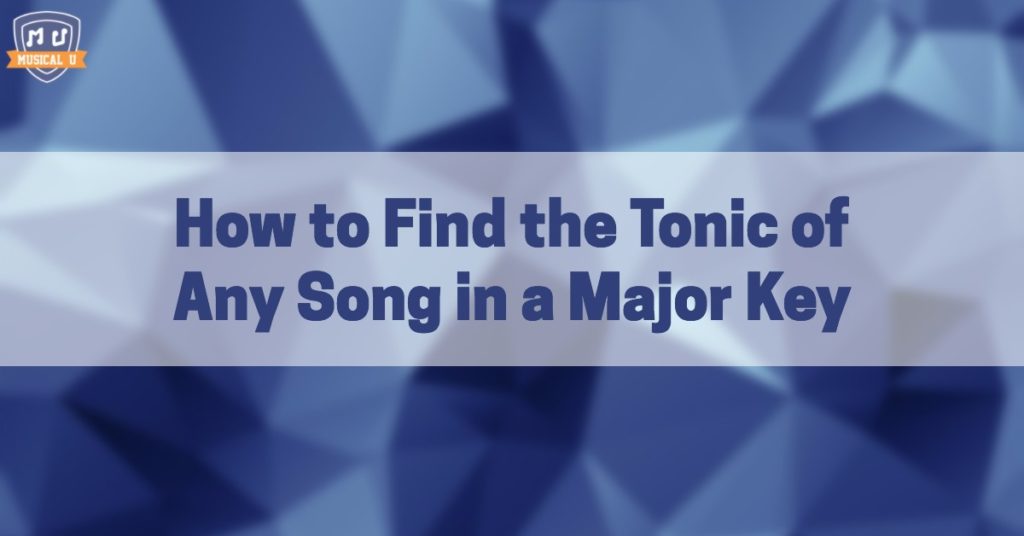One of the most important skills you can learn with ear training is how to find the tonic of a given song or composition. This gives you information about how the music is organized, and tells you what chords it is likely rooted in. Also, if you get lost in a song and can’t understand what’s going on musically, using the tonic as a point of reference can help get you back on track!
Finding the tonic in sheet music is a fairly straightforward process; you have all the notes written out for you, and a key signature to help you out even further. But what if you don’t have sheet music? What about finding the tonic by ear?
This is a summary post.
→ Read the full article
What’s the Purpose of Finding the Tonic?
Being able to find the tonic has enormous benefits for every musician, whether they are singing, composing, or simply learning their favourite songs on an instrument.
Finding the tonic enables you to sing or play in tune, play by ear, improvise, transcribe your own music, compose with greater ease, and more!
How Do We Find the Tonic?
Our suggested method focuses on finding the tonic by understanding its relationship to the other notes, and familiarizing yourself with the place the tonic holds within a composition, and how it sounds.
The tonic can be defined as the natural “resting place” of the music. It’s possible that a melody will both start and end on the tonic, for a sense of “completeness”.
Compare the following two samples:
The second clip, as you can hear, invokes a more “finished” sensation; the melody resolves by ending on the tonic. This signifies the end of the music, as the melody sounds “complete”.
Try this: listen to your favourite song, and try to single out the note that sounds like the natural resting place of the music. Often, the music will end on the tonic, or on a note that exists in the tonic chord!
When listening, take note of whether the song started on the tonic, what note the music ended on (and whether it felt “complete” and like a natural resting place), and what the key of the song was.
If the tonic proves to be difficult to single out, try writing the melody out, beginning with the last note followed by the other notes in ascending order. This should help determine the key, and therefore the tonic of the piece.
If all else fails and you are unsure whether the last note is the tonic, listen for the lowest note in the music (often a bass note) – this may help!
The Leading Tone Can Help Find the Tonic
If the tonic is the natural resting place of the melody, the leading tone is the natural lead-in to the tonic! It often “resolves” to the tonic to complete the melody.
The leading tone is the seventh step in a major scale, placing it a half-step below the tonic.
Caveats and Challenges to Finding the Tonic
Though there are many tips, tricks, and clues to help you find the tonic, it won’t always be a straightforward process.
Case #1: Modulation
Modulation is the changing from one key to another. This adds interest and connects different musical thoughts together. However, it also means that the tonic changes.
Case #2: The melody may alternate between major and minor scales.
This again results in a changing tonic.
Case #3: Some modern writing systems result in there not being a tonic.
Two examples of this are atonalism and serialism. Atonality describes music that lacks a tonal center, or a key. Serialism involves composing music by using a series of notes in a specific order to build a piece of music. In both cases, the music is not written in a specific key, eliminating the need for (and presence of) a tonic.
Case #4: The melody may use modes (e.g., Dorian, Lydian) rather than scales that are either major or minor.
The tonal system therefore changes, and it takes a bit more practice to be able to identify the tonic; ear training really helps in this regard.
Finding the Tonic Through Ear Training
Like any musical skill, being able to determine the tonic of any composition takes practice, practice, practice! Take the opportunity to closely listen for the tonic in every song you can, and soon enough, it will become second nature.







